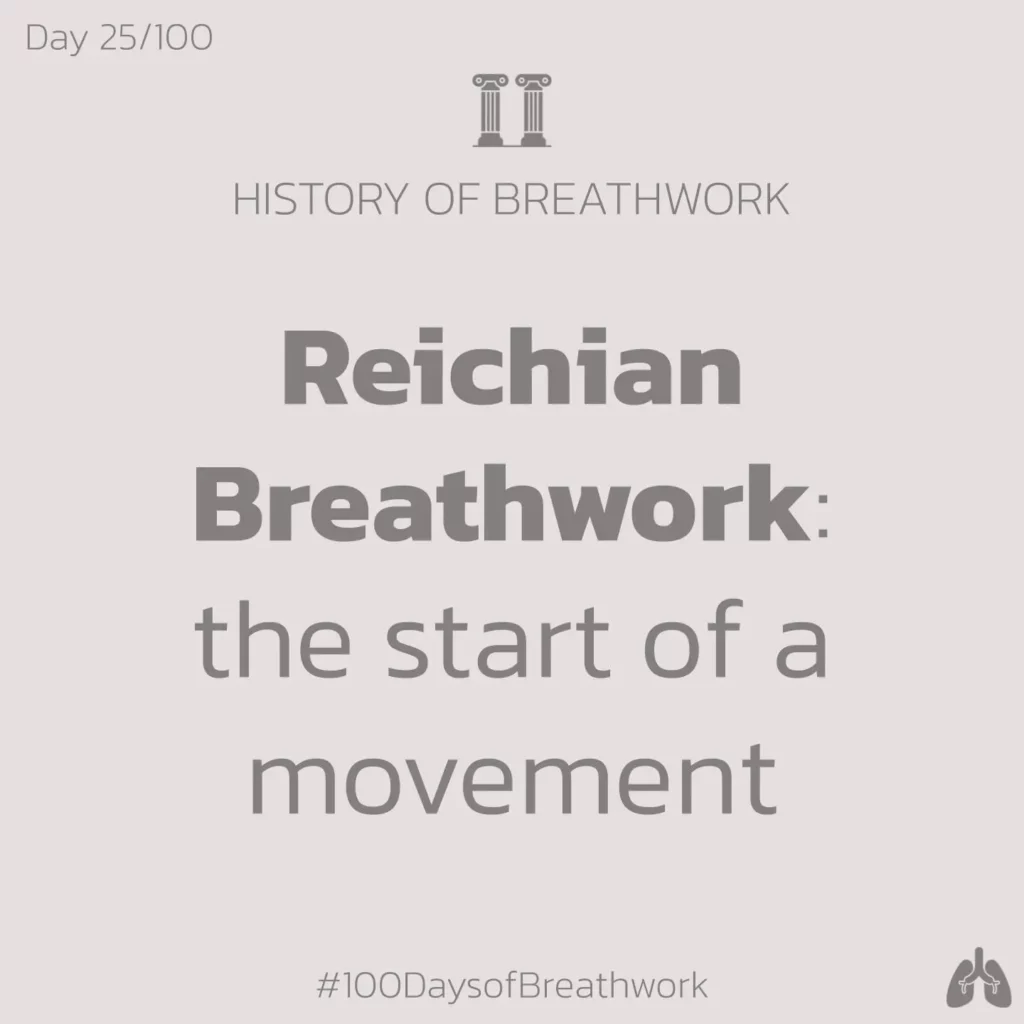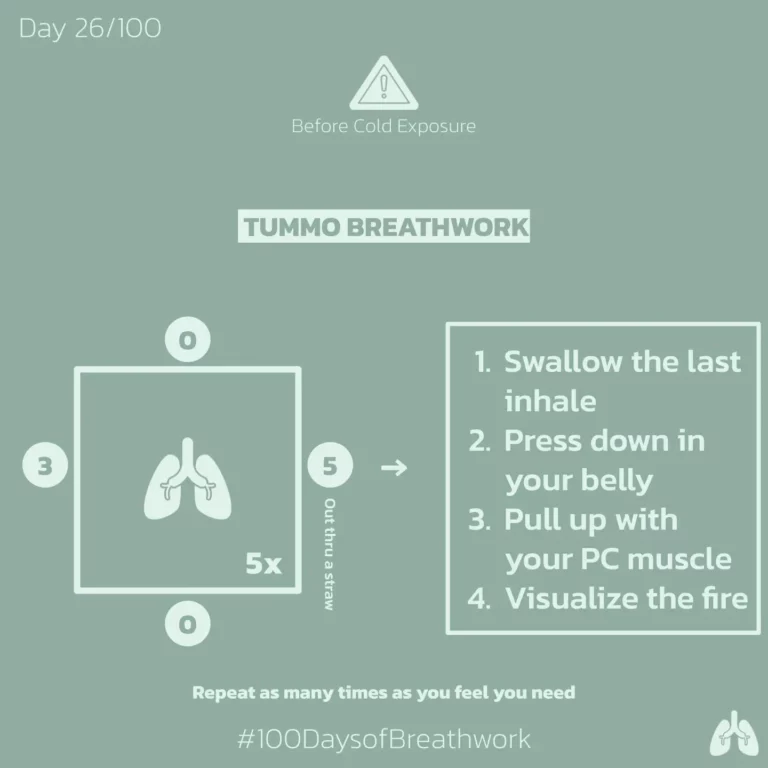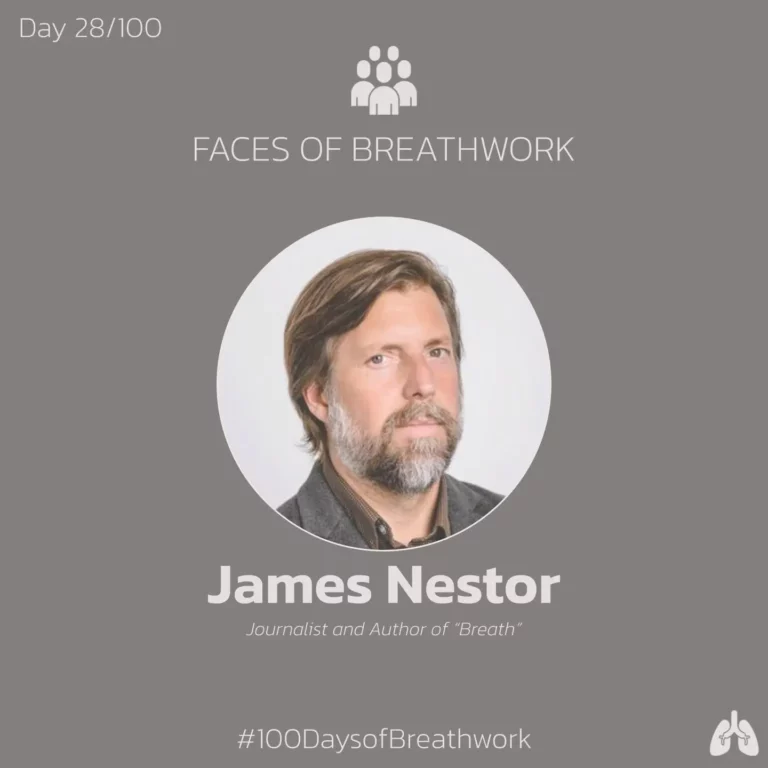
100 Days of Breathwork: Recap of Days 25-30
Last week we got to learn more about Pranayama—the ancient precursor to modern breathwork—and the different techniques within it. We also got to explore the effects of breathwork on our Parasympathetic Nervous System and the benefits that it brings. This week, we get to learn about two other types of breathwork practice: one developed in 1920s Germany and the other in ancient Tibet.
Day 25: History of Breathwork
What is Reichian Breathwork?
This style of breathwork was originated by Wilhelm Reich, a German psychotherapist who focused his work on the idea that sexual repression was a cause of psychological distress—and his goal in the 1920s was to free society of its constraints on sexuality.
Given how radical this was at his time, he was banned from the psychological therapist governing body, the International Psychoanalytic Association, which opened his work up to go even deeper and more creative.
With this newfound freedom, Reich began to develop his theories further, which ultimately led to his belief that someone’s “muscular armor” kept them from freeing up psychological trauma – and that much of this ‘trauma is held within their body.
He then found that by breathing heavily (or breathwork), that it would loosen this “armor” and the individual could release their trauma.
And so Reichian Breathwork was born as a form of emotional healing that sparked a resurgence of breathwork in the 20th century.
Day 26: Situational Breathwork
Breathwork Before Exposure
This week, we dive into a way to activate inner heat that prepares our body for cold exposure (like a cold water plunge) At this point, you might guess that I’m going to say Wim Hof Method…. But I’m not ) Instead, I’m talking Tummo.
Tummo Breathwork
Historically, Tibetan monks have been known to use this breathwork technique to raise their body temperature by seven degrees and stave off a blustery cold in the mountains.
But how exactly do you do Tummo?
Let’s dive in.

There are a couple of types of Tummo, one very similar to Wim Hof (but with a fire visualization as we discussed in Day 7). But the type we’re going to go through is NOT that version, however, it does involve a fire visualization.
Start by sitting in a comfortable position that will enable you to take deep breaths. Visualize a ball of fire in the pit of your stomach that is giving you heat. Then, inhale deeply through your nose at a controlled pace, and exhale through your mouth as if blowing through a straw. After the 5th time, take one more deep inhale, swallow, and send pressure down to the bottom of your belly/diaphragm. Simultaneously, pull up using your PC muscles (the ones you use to stop a stream of urine). Hold this for as long as you can, creating that up/down pressure, and visualizing the fire building in your belly. Repeat as you feel is necessary.
Tummo Breathwork
- Swallow the last inhale
- Press down in your belly
- Pull up with your PC muscle
- Visualize the fire
Day 27: Science of Breathwork
The Bohr Effect and why it’s not boring at all
This week we’re covering a topic that isn’t boring at all, despite its name. Here’s what you need to know about The Bohr Effect.
The Bohr Effect gets its name from the Danish scientist Christian Bohr, who discovered the concept in 1904. He found that the connection, or affinity in scientific terms, between oxygen and hemoglobin, decreases with the presence of CO2 in the blood.
- First off, what’s hemoglobin? Hemoglobin is a protein in your red blood cells that carries oxygen to your body’s organs and tissues and then transports CO2 from your back to your lungs. • Secondly, what do you mean by decreased affinity? Like they love each other less?
- Secondly, what do you mean by decreased affinity? Like they love each other less? Well, kind of. What I mean by that is when there is CO2 in the blood, or our pH is lower than usual (7.4), the hemoglobin will let go of the oxygen more easily to all the places in the body that need, like your organs and tissues.
What does this translate to? The importance of CO2 tolerance. Remember, when our brain stem senses CO2 in our blood, it gives us the urge to breathe. So our ‘tolerance’ of CO2 means the brain stem can hold off on forcing us to breathe if we can tolerate a higher amount. There are ways to train this, which get into later. For now, just know that if you can tolerate CO2 in your blood, you enable your hemoglobin to efficiently distribute oxygen to your organs and tissues And there’s nothing bohring about that.
Day 28 Faces of Breathwork
James Nestor
Nestor, who we’ve referenced a few times thus far in the 100 Days of Breathwork, is today’s Face of Breathwork. On top of writing one of the most influential recent books on breathing and breathwork, Breath: The New Science of a Lost Art, he is also the author of many other books, a film creator, and a speaker on stages around the world.
Breath explores the long history of how our species has lost the ability to breathe properly and how we suffer from so many modern conditions (sleep apnea, asthma, allergies, autoimmune disease) because of it. He draws on the intersection of many fields of study, including physiology, psychology, pulmonology, and biochemistry, to turn conventional wisdom of what we think we know about this basic biological function on its head – in particular the call for nasal breathing and its subsequent health benefits.

Day 29: Monday Morning Breathwork
For our Monday Morning Breathwork session yesterday, we had the pleasure of being joined by Scott Stone, a Wim Hof instructor and Recal Mindfulness Coach, for a warm discussion before and after the breathwork. You can watch the recorded session on Linkedin or YouTube.
And now that “MMB” is a ‘thing,’ join us next week: same Lime, same place. 7:15 am ET / 6:15 am CT on Linkedin Live and YouTube. This is a great way to kick off the week with a breathwork session to calm stress, reduce anxiety, and increase focus.
Day 30: Common Questions
What are some benefits of proper breathing?
Ok, let’s define proper breathing. This is not meant to be an exhaustive explanation, but here is my take on proper breathing. First off, proper everyday breathing should be done through your nose. Your nose is designed for breathing. Among many things, it filters the air as you inhale, regulates the temperature, produces nitric oxide to you can more optimally receive the air, and it can be more conducive to a pace of breathing that is most efficient for our body (i.e. it encourages you to take slow, deep breaths).
And more on that point, proper breathing is done at a slower pace than one would assume! It is very common that adults to take 10, 15, or even 20 breaths per minute. However, the most optimal amount is between 5 to 7 breaths.
An important factor beyond the pace of breath is how deep your breaths are. You should strive to fill up the bottom of your lungs with each breath, as there are a lot of bronchi at the bottom of your lungs, and breathing slowly and deeply into them will open them up for a more efficient gas exchange.
Now that we’ve established what proper breathing is, what are the benefits?
- Increased lung capacity (and research CO shows that there is a correlation between lung capacity and longer life expectancy)
- Increased strength of diaphragm muscle
- Proper filtering of air into the body
- Efficient distribution of oxygen through the body
- Proper disposing of carbon dioxide
Conclusion
It has been another amazing week of breathwork exercises. We learned about Reichian Breathwork and its many benefits. We also got to use Tummo Breathwork to enhance our abilities to fight off the cold. We also got a deeper understanding of the benefits of breathwork physically.
